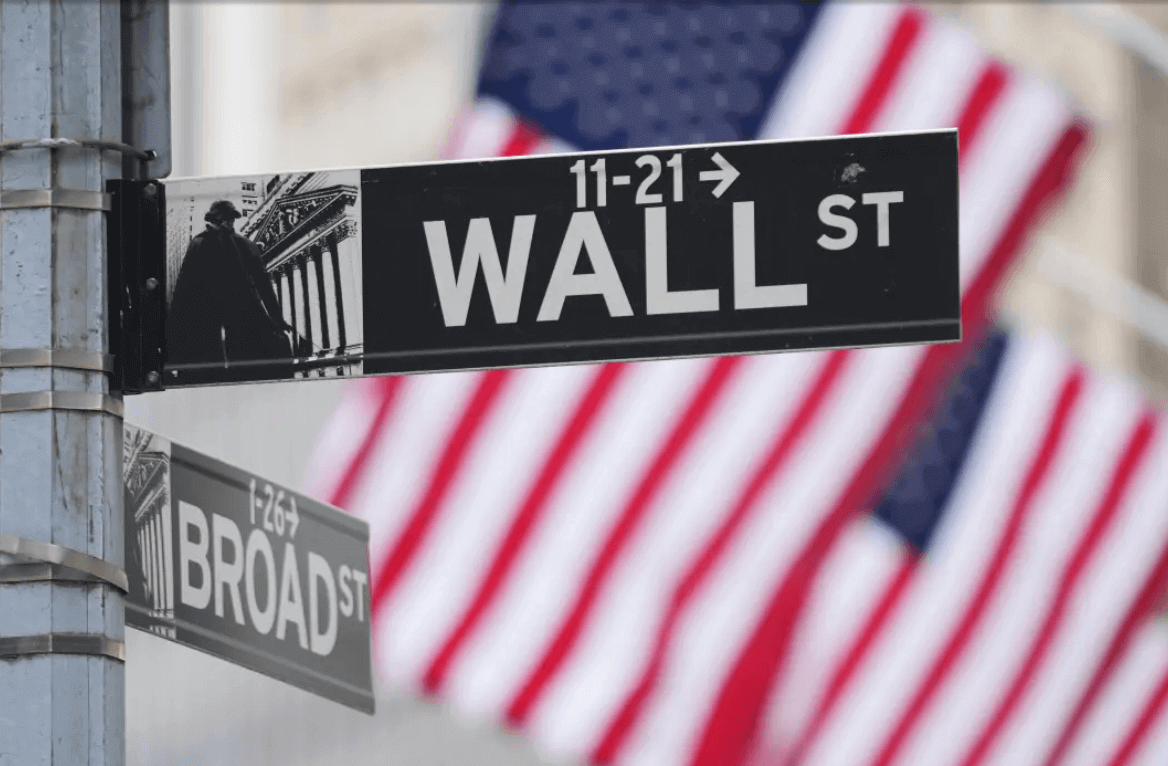特朗普关税冲击后,美国股市暴跌引领全球抛售

【中美创新时报2025 年 4 月 3 日编译讯】(记者温友平编译)周四,受唐纳德·特朗普总统最新一轮也是最严厉的关税措施影响,全球金融市场受到冲击,美国股市可能受到最严重的影响。美联社记者STAN CHOE对此作了下述报道。
标普 500 指数早盘下跌 3.3%,跌幅超过其他主要股市。截至美国东部时间上午 9:50,道琼斯工业平均指数下跌 1,204 点,跌幅 2.9%,纳斯达克综合指数下跌 4.3%。
随着全球对关税可能造成的通胀上升和经济增长放缓的双重影响的担忧加剧,几乎没有人能幸免。从原油到大型科技股,再到只投资美国房地产的小公司,所有东西的价格都在下跌。甚至连最近因投资者寻求更安全的资产而创下纪录的黄金也下跌了。美元兑欧元和加元等其他货币的汇率也下跌。
全球投资者都知道特朗普将于周三晚间宣布一系列大规模关税,而围绕这一举措的担忧已导致标普 500 指数上个月跌至历史高点 10%。但 Sanctuary Wealth 首席投资官 Mary Ann Bartels 表示,特朗普仍以“最糟糕的关税情景”让他们大吃一惊。
特朗普宣布对进口产品征收最低 10% 的关税,对来自中国和欧盟等特定国家的产品征收的关税则要高得多。瑞银表示,这些关税“很有可能”会达到大约一个世纪以来的最高水平,可能导致今年美国经济增长率下降 2 个百分点,通胀率上升近 5%。
瑞银 (UBS) 策略师 Bhanu Baweja 和其他分析师认为,这样的打击非常可怕,以至于“让人的理性思维认为,股价可能维持在低位”。
华尔街长期以来一直认为特朗普只会把关税作为与其他国家谈判的工具,而不是一项长期政策。但周三的声明可能表明,特朗普认为关税更多的是帮助解决意识形态目标——例如将制造业工作夺回美国——而不仅仅是扑克游戏中的开场赌注。
如果特朗普坚持实施关税政策,股价可能需要从历史高点下跌 10% 以上,才能反映出随之而来的全球经济衰退,以及美国公司可能因此遭受的利润打击。
Thornburg Investment management 的投资组合经理 Sean Sun 表示:“考虑到对全球消费和贸易的潜在连锁反应,市场实际上可能反应不足,特别是如果这些利率成为最终利率的话”,但他认为特朗普周三的声明更像是一个开场举措,而非政策的终点。
一个不确定因素是美联储可能会降息以支持经济。美联储去年年底一直在这么做,直到 2025 年才暂停降息。较低的利率有助于美国企业和家庭更容易借贷和消费。
美国国债收益率下跌,部分原因是市场对即将降息的预期上升,以及对美国经济健康状况的普遍担忧。10 年期美国国债收益率从周三晚间的 4.20% 和 1 月份的 4.80% 左右降至 4.02%。这对债券市场来说是一个巨大的变化。
不过,美联储的行动自由可能比它希望的要少。虽然低利率可以刺激经济,但也可能推高通胀。由于关税,通胀担忧已经加剧,尤其是美国家庭正准备迎接大幅加息。美联储没有好的工具来解决所谓的“滞胀”,即经济停滞而通胀居高不下。
当然,目前经济仍在增长。周四的一份报告称,上周美国申请失业救济的人数有所减少,这是就业市场总体保持良好状态的最新信号。经济学家此前预计失业率将有所上升。
但对可能出现滞胀的担忧仍然压低了各行业的股价,导致标准普尔 500 指数中四分之三的股票下跌。
耐克股价下跌 12%,因为其许多产品都是在美国以外生产的。美国联合航空下跌 10.6%,因为担心全球经济衰退的顾客可能不会经常乘飞机出差,或者不愿意去度假。折扣零售商 Dollar Tree 股价下跌 8.5%,原因是人们担心其客户已经受到高通胀的挤压,可能会承受更大的压力。
市场上一些最重的股票是那些在华尔街对人工智能技术的狂热中早些时候飙升的股票。批评人士表示,在近几年股价如此之高之后,这些股票在整体上看起来过于昂贵的市场中显得最为恶劣。
英伟达股价下跌 4.6%,今年迄今的亏损额接近 22%。该公司股价去年上涨了一倍多,2023 年又上涨了两倍多。
海外股市方面,全球股市大幅下跌,欧洲股市法国CAC 40指数下跌2.9%,德国DAX指数下跌2.1%。
日本日经 225 指数下跌 2.8%,香港恒生指数下跌 1.5%,韩国首尔综合指数下跌 0.8%。
美联社商业记者马特·奥特 (Matt Ott) 和伊莱恩·库尔滕巴赫 (Elaine Kurtenbach) 对本文亦有贡献。
题图:2025 年 4 月 2 日星期三,纽约证券交易所外展示着华尔街的标志。(美联社照片/塞思·韦尼格)
附原英文报道:
Dow drops 1,200 as US stock market leads a worldwide sell-off following Trump’s tariff shock
Wall Street signs are displayed outside the New York Stock Exchange in New York, Wednesday, April 2, 2025. (AP Photo/Seth Wenig)
By STAN CHOE
NEW YORK (AP) — Financial markets around the world are reeling Thursday following President Donald Trump’s latest and most severe volley of tariffs, and the U.S. stock market may be taking the worst of it.
The S&P 500 was down 3.3% in early trading, worse than the drops for other major stock markets. The Dow Jones Industrial Average was down 1,204 points, or 2.9%, as of 9:50 a.m. Eastern time, and the Nasdaq composite was 4.3% lower.
Little was spared as fear flared globally about the potentially toxic mix of higher inflation and weakening economic growth that tariffs can create. Prices fell for everything from crude oil to Big Tech stocks to small companies that invest only in U.S. real estate. Even gold, which has hit records recently as investors sought something safer to own, pulled lower. The value of the U.S. dollar also slid against other currencies, including the euro and Canadian dollar.
Investors worldwide knew Trump was going to announce a sweeping set of tariffs late Wednesday, and fears surrounding it had already pulled the S&P 500 10% below its all-time high last month. But Trump still managed to surprise them with “the worst case scenario for tariffs,” according to Mary Ann Bartels, chief investment officer at Sanctuary Wealth.
Trump announced a minimum tariff of 10% on imports, with the tax rate running much higher on products from certain countries like China and those from the European Union. It’s “plausible” the tariffs altogether, which would rival levels unseen in roughly a century, could knock down U.S. economic growth by 2 percentage points this year and raise inflation close to 5%, according to UBS.
Such a hit would be so frightening that it “makes one’s rational mind regard the possibility of them sticking as low,” according to Bhanu Baweja and other strategists at UBS.
Wall Street had long assumed Trump would use tariffs merely as a tool for negotiations with other countries, rather than as a long-term policy. But Wednesday’s announcement may suggest Trump sees tariffs more as helping to solve an ideological goal – wresting manufacturing jobs back to the United States, for example – than just an opening bet in a poker game.
If Trump follows through on his tariffs, stock prices may need to fall much more than 10% from their all-time high in order to reflect the global recession that could follow, along with the hit to profits that U.S. companies could take because of them.
“Markets may actually be underreacting, especially if these rates turn out to be final, given the potential knock-on effects to global consumption and trade,” said Sean Sun, portfolio manager at Thornburg Investment management, though he sees Trump’s announcement on Wednesday as more of an opening move than an endpoint for policy.
One wild card is that the Federal Reserve could cut interest rates in order to support the economy. That’s what it had been doing late last year before pausing in 2025. Lower interest rates help by making it easier for U.S. companies and households to borrow and spend.
Yields on Treasurys tumbled in part on rising expectations for coming cuts to rates, along with general fear about the health of the U.S. economy. The yield on the 10-year Treasury fell to 4.02% from 4.20% late Wednesday and from roughly 4.80% in January. That’s a huge move for the bond market.
The Fed may have less freedom to move than it would like, though. While lower rates can goose the economy, they can also push upward on inflation. And worries are already worsening about inflation because of tariffs, with U.S. households in particular bracing for sharp increases. The Fed has no good tool to fix what’s called “stagflation,” where the economy stagnates and inflation stays high.
The economy at the moment is still growing, of course. A report on Thursday said fewer U.S. workers applied for unemployment benefits last week, the latest signal that the job market remains OK overall. Economist had been expecting to see an uptick in joblessness.
But worries about possible stagflation nevertheless knocked down stocks across industries, leading to drops for three out of every four stocks that make up the S&P 500.
Nike fell 12% because so many of its products are made outside the United States. United Airlines lost 10.6% because customers worried about the global economy may not fly as much for business or feel comfortable enough to take vacations. Discount retailer Dollar Tree tumbled 8.5% amid worries that its customers, already squeezed by still-high inflation, may be under even more stress.
Some of the heaviest weights on the market were those that had soared earlier in Wall Street’s frenzy around artificial-intelligence technology. Critics said they were looking the most egregious in a market that overall looked too expensive after prices ran so high in recent years.
Nvidia sank 4.6% to bring its loss for the year so far to nearly 22%. It had more than doubled last year after more than tripling in 2023.
In stock markets abroad, indexes fell sharply worldwide. France’s CAC 40 dropped 2.9%, and Germany’s DAX lost 2.1% in Europe.
Japan’s Nikkei 225 dropped 2.8%, Hong Kong’s Hang Seng lost 1.5% and South Korea’s Kospi dropped 0.8%.
AP Business Writers Matt Ott and Elaine Kurtenbach contributed.

